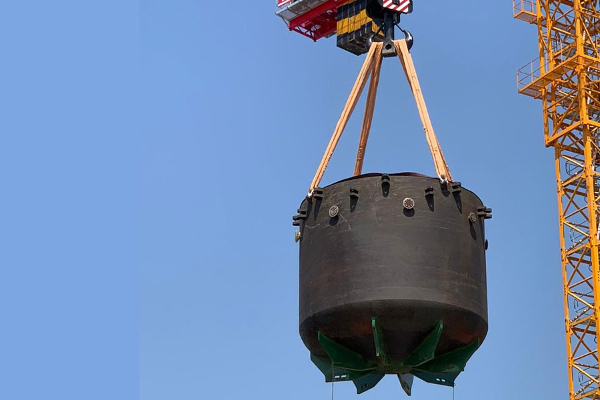Explained: What is a ‘core catcher’ in a nuclear plant, recently installed at Kudankulam? Unit 1 and Unit 2 of the Kudankulam Nuclear Power Plant are operational, and were connected to the power grid in 2013 and 2016, respectively. The civil work for Units 3 and 4 began in June 2017. (File)
On Saturday (December 21), the Moscow-based Rosatom State Corporation Engineering Division said that it had installed a core melt localisation device (CMLD) or “core catcher” at Unit 3 of Tamil Nadu’s Kudankulam Nuclear Power Plant (KKNPP).
According to a press release, the device is designed to localise and cool the molten core material in case of a meltdown accident.
Unit 1 and Unit 2 of the KKNPP are operational, and were connected to the power grid in 2013 and 2016, respectively. The civil work for Units 3 and 4 began in June 2017.
What is the protective “core catcher” device installed at Kudankulam Unit 3?
Molten core material, or corium, is lava-like material that gets formed in the core of a nuclear reactor in the event of a meltdown accident. Such an accident occurs when the nuclear fission reaction taking place inside a reactor is not sufficiently cooled, and the buildup of heat causes fuel rods to melt down. The corium so formed can remain radioactive for several decades, even centuries.
In the past, meltdown accidents have occurred at Chernobyl in Russia in 1986 and at Fukushima in Japan in 2011.
According to the Rosatom website, the core catcher is a cone shaped metal structure that weighs about 800 tonnes. The structure is double walled, with the gap between the two walls filled with FAOG (ferric and aluminium oxide granules). The core catcher is filled with a ceramic mixture also including ferric oxide and aluminium oxide, called ‘sacrificial material’.
Also Read | RBI goes for ‘Operation Twist’ to bring down long-term rates
The sacrificial material prevents the corium from trickling through and also acts as a cooling mechanism.
The core catcher device is installed at the bottom of the nuclear station’s protective shell, and is designed to save the latter as well as exude radioactive emission in the environment in case of a serious accident, according to the press release.
Where has a core catcher device been used before?
In 2011, the device was first installed at the Tianwan nuclear power plant in China, which is of Russian design.
In 2018, a 200-tonne core catcher was installed Rooppur 1 Nuclear Power Plant in Bangladesh.
At Kudankulam, it has been installed in the design position under the reactor pit of Unit 3, and has been adapted to the relevant site conditions and safety requirements.
The device has improved seismic resistance, hydro-dynamic and shock strength as well as equipped with flood protection and simplified installation and assembly technology.
Source: IE
Image Courtesy: Financial Express
You may also like
-
Trade Connect E-platform For Exports Is Single Window, Fast, Accessible And Transformational: Shri Piyush Goyal
-
Five Successful Years of Pradhan Mantri Kisan Maandhan Yojana (PM-KMY)
-
Global Study by Leading Experts : Swachh Bharat Mission Drives Significant Reductions in Infant Mortality Rates in India
-
India Graphene Engineering and Innovation Centre (IGEIC) Under the Vision of Viksit Bharat@2047 Launched
-
Government Launches Vishvasya-Blockchain Technology Stack
